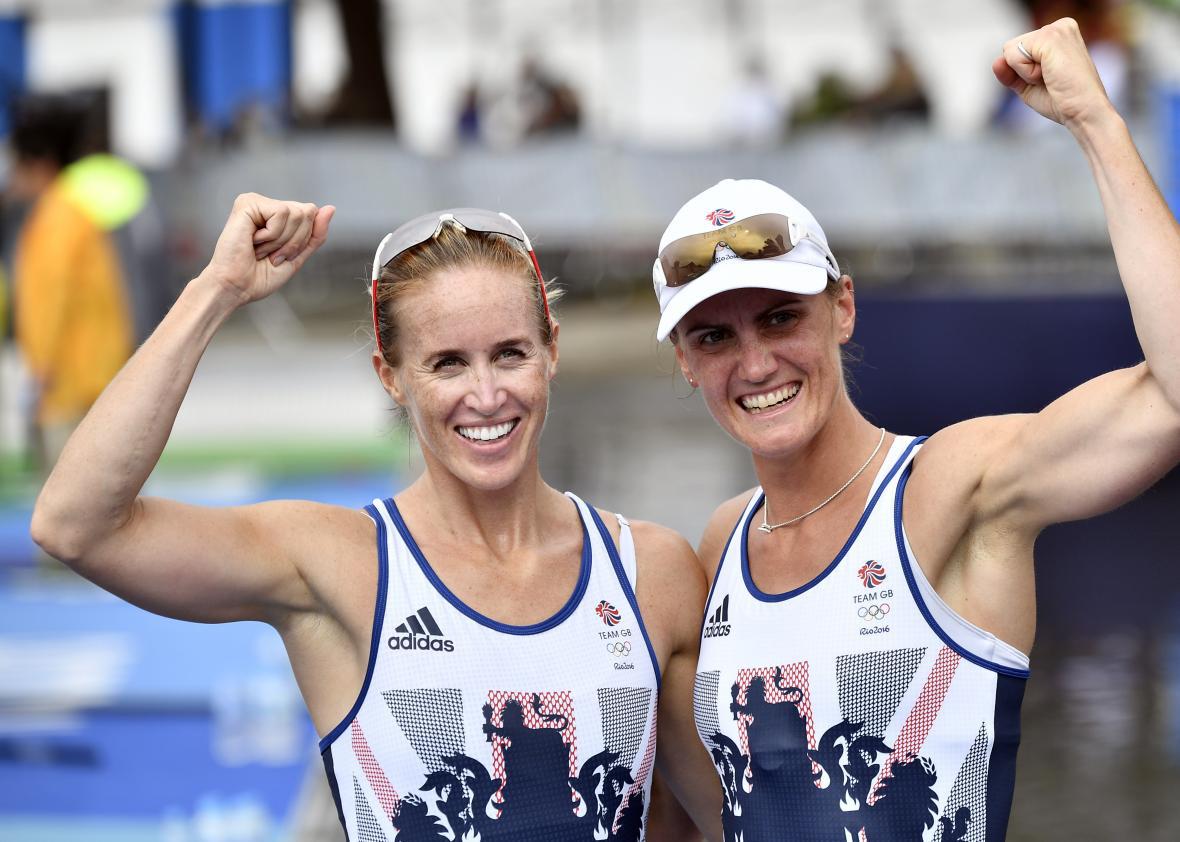David Epstein, a writer for ProPublica and the author of the book The Sports Gene, told a version of this story on Friday’s edition of Slate’s Hang Up and Listen Olympics Extra. An adapted transcript of the audio recording is below, and you can listen to Epstein’s essay by clicking on the player beneath this paragraph and fast-forwarding to the 17:37 mark.
There were a couple of moments on Friday morning, during the women’s coxless pair rowing event, when the race was reminiscent of a Katie Ledecky performance. That is, the British pair of Heather Stanning and Helen Glover were so far out in front that if you took a screenshot, they would have been the only ones in it. The race, which is about a mile and a quarter long, narrowed toward the finish, but Glover and Stanning held on for the win and extended a five-year undefeated streak. That is, they won gold at the 2012 Olympics, they won the world championships in 2013, 2014, and 2015, and now they won gold in 2016—and they won every single race in between.
Just as staggering as how good they are is how quickly they got this good. Heather Stanning didn’t start rowing until university. Helen Glover has only been rowing for eight years total, so she’s been undefeated for five of the eight years she’s been involved in the sport. At the age of 22, when many Olympic athletes are hitting their primes, Glover had never rowed at all. She’d played field hockey and tennis and had been a swimmer. Then she decided to go to one of the talent identification programs that Great Britain started in the run-up up to the 2012 Olympics. In 2008, she was one of about 4,500 British women who were taken in and given the chance to show they had the stuff that a gold medal rower is made of.
The talent identification program in this case was called Sporting Giants, so the first requirement for women was that they had to be at least 5-foot-11, be between the ages of 16 and 25, and have some sort of athletic background, though none had any rowing experience. Helen Glover fit the bill. Not only is she tall but she has long limbs and a low brachial index, which is the ratio of the forearm to the total arm. A short forearm compared to the total arm means better leverage—it’s great for pulling things, not so great for throwing things.
In 2009, just one year after Glover first set foot in a rowboat, she won gold in the women’s single scull at a famous regatta. The next year, with Stanning, in Glover’s second year ever of rowing, the pair won silver at the world championships. Since then, they’ve been almost unbeatable, and for the last five years they’ve been completely unbeatable.
Great Britain has had incredible success with talent identification programs since they were awarded the Olympics, finding several golds in the rough. For now, the question is, just how long can these British women go undefeated? When you talk about Biles, Phelps, and Ledecky this Olympics, make sure to throw Glover and Stanning in the mix.
